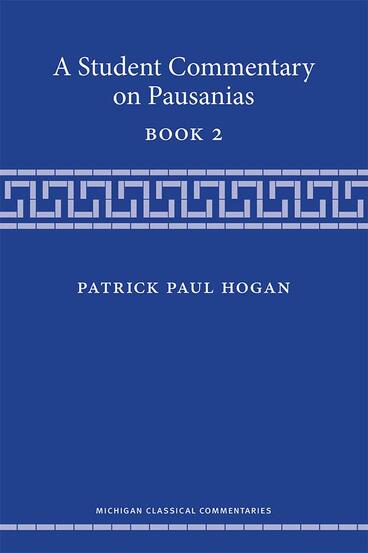A Student Commentary on Pausanias Book 2
Patrick Paul Hogan guides students through Pausanias’ description of the strategic and rich city of Corinth and its neighbors
Description
In the ten books of his Periegesis, or “Description of Greece,” the ancient Greek traveler Pausanias (second century CE) describes the central regions of ancient Greece, giving his readers a wealth of information about religious rites, indigenous myths, historical events, sculptural and artistic works, temples, local customs, and much more. In A Student Commentary on Pausanias Book 2, Patrick Paul Hogan provides intermediate-level students of Classical Greek the necessary linguistic, historical, mythographical, archaeological, and geographical information to read and comprehend Book 2 of Pausanias’ Periegesis.
Book 2 of Pausanias’ work covers several major cities of the northeast Peloponnesus, principally Corinth but also Argos, Epidaurus, and Troezen, as well as the prominent island of Aegina. In A Student Commentary on Pausanias Book 1, Hogan reintroduced students to Pausanias after nearly a century. In this new volume he does not focus exclusively on the topography and material remains of the areas he describes: his line-by-line commentary on Pausanias’ text devotes equal attention to explicating the vocabulary and syntax of the Greek and putting into context the myriad historical and mythological references found throughout the text, for example, the life of the Sicyonian politician Aratus and the myth of Hyrnetho, daughter of Temenus.
A Student Commentary on Pausanias Book 2 includes the full text of Book 2 in Classical Greek together with Hogan’s commentary. The book is accessible to intermediate-level students, whether undergraduates or graduate students, who are ready to read extended passages of Classical Greek prose, and will also be of interest to scholars of the topography, history, and mythology of ancient Greece, specifically the Argolid.
Patrick Paul Hogan teaches at Keith Country Day School in Rockford, Illinois. He is the author of A Student Commentary on Pausanias Book 1, also published in the Michigan Classical Commentaries series.
Reviews
"The heart of the work is the commentary. As a philologist, Hogan does an outstanding job elucidating less common grammar, complex syntax, and unusual vocabulary. ... Hogan is to be commended for making Pausanias’ Greek text accessible to undergraduates in a way that no previous commentaries have done."
- John Gruber-Miller, Cornell College
-- Bryn Mawr Classical Review

